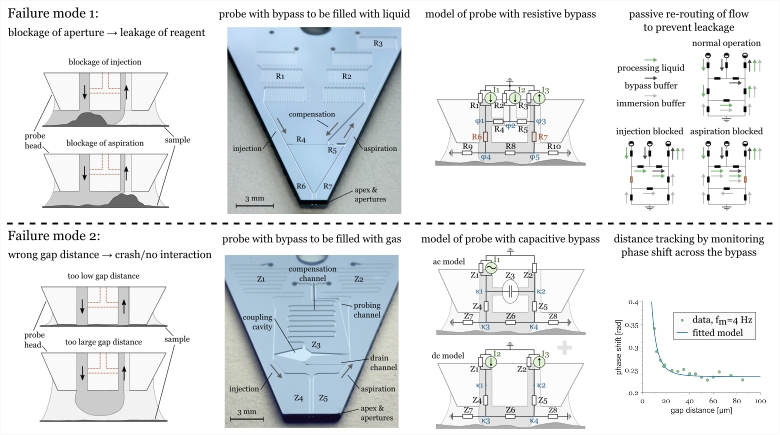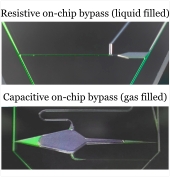
Liquid scanning probes enable interfacing with biological surfaces and are compatible with a wide range of workflows and bioanalytical applications. To facilitate rapid and widespread adoption of liquid scanning probes in research, as well as in diagnostics, their operational robustness needs to be improved. Two main failure modes were addressed here: 1.) an obstruction of the flow path of the processing liquid, and 2.) a deviation from the desired gap distance between probe and sample. These failure modes can be addressed by means of a passive, multi-functional design element – a microfluidic bypass channel. This bypass channel can be operated in dc and in ac mode, each preventing one of the two main failure modes. In dc mode, the bypass channel is filled with liquid and exhibits resistive behavior, enabling the probe to passively react to obstructions of its apertures or channels. In the case of an obstruction on either the injection or the aspiration side of the channel network in the probe head, the processing liquid is passively diverted through the bypass to prevent its leakage and to limit the build-up of high-pressure levels. In ac mode, the bypass is filled with gas and has capacitive characteristics, allowing the gap distance between the probe and the sample to be monitored by observing a phase shift in the transduction of a pressure modulation applied to the inlet channel of the probe. The phase shift can be assessed by optically tracking the motion of the gas liquid-interfaces on either side of the gas-filled bypass. For a modulation of the input pressure at 4 Hz, significant changes of the phase shift were observed up to a gap distance of 25µm. The presented passive design element counters both failure modes in a simple and highly compatible manner.

